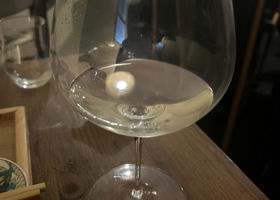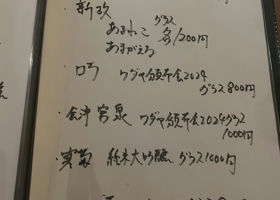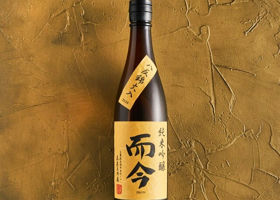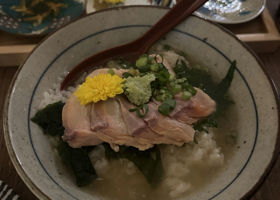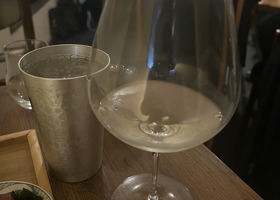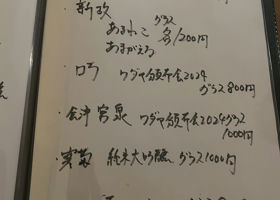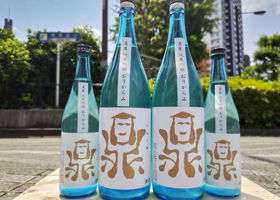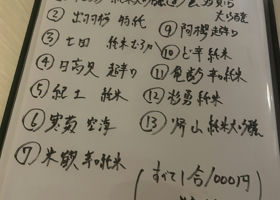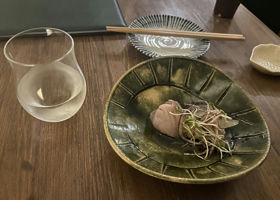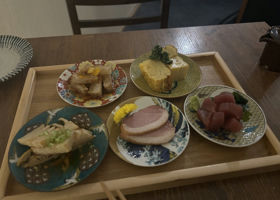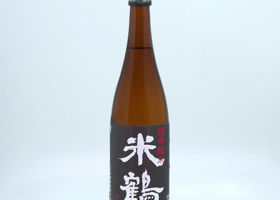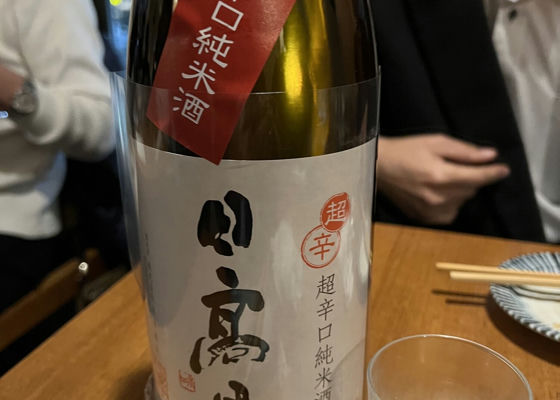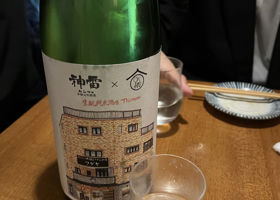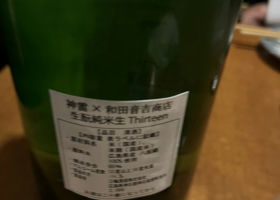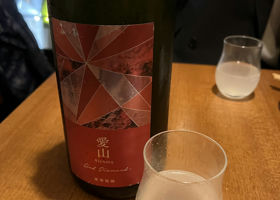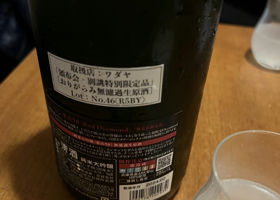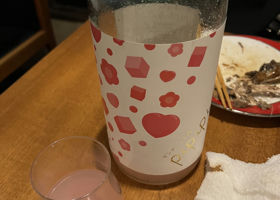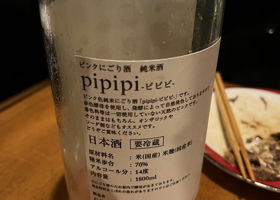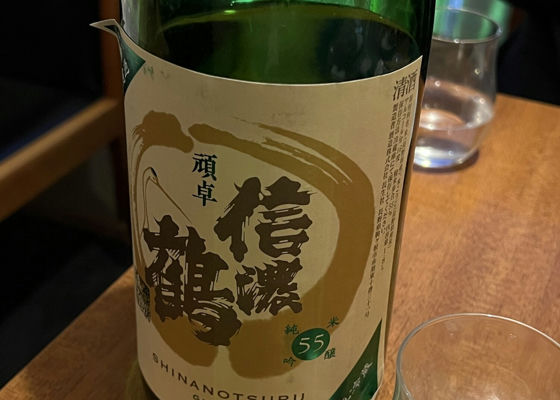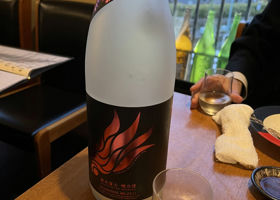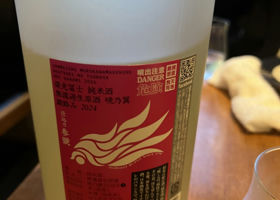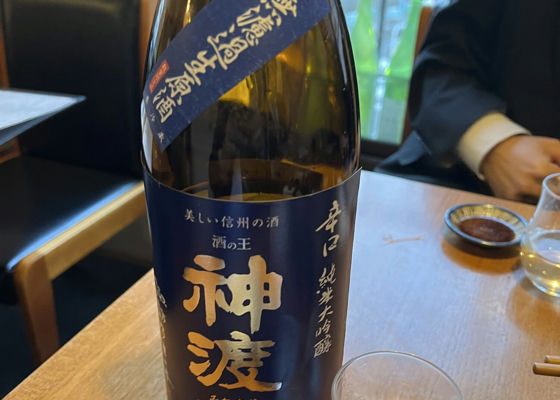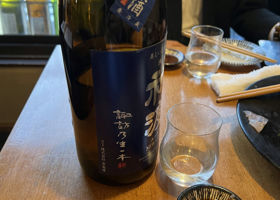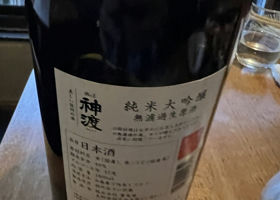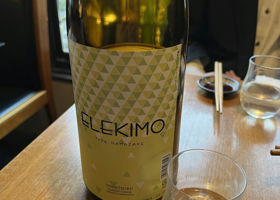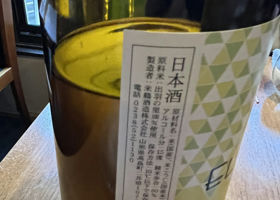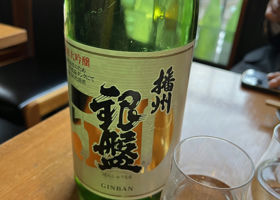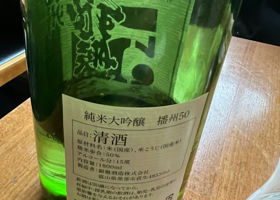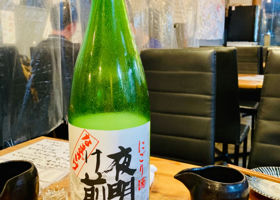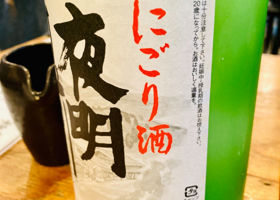Timeline
酔生夢死Tokyo 1)
Jikon, which I have never drunk before: ✖︎ Hachitan-Nishiki
The aroma is spicier than you imagine!
(served at room temperature in a Burgundy glass)
The taste is calm, refreshing and Hachitan-like.
The taste is creamy and well-balanced with a freshness that is typical of Hachitan: ⭕️
Ingredients: 55% Hachitan-Nishiki (Hiroshima Prefecture)
Alcohol 16%.
Sake Degree +1
Acidity 1.7
Yeast used
Spring water from Nabari River (medium soft water)
Finish: Wasabi tea-zuke with sakura trout
Because the sakura trout is on the rare side
It gradually gets cooked and that is also enjoyable. ⭕️
Chrysanthemum flowers are eaten with a sprinkling of chrysanthemum flowers. ⭕️ 酔生夢死Tokyo (1)
Ding Dong that I'm interested in
In a large wine glass
Delicious
More sophisticated and beautiful than Takizawa ⭕️
Only 15 stores in Japan carry it.
Nagano Prefecture, Japan
Rice: Kinmon-Nishiki
Polishing ratio 55
Alcohol level: 16%. 酔生夢死Tokyo (1)
Recommended for those who want a refreshing taste
Appetizer: Spanish Mackerel Aburi
Assorted 5 kinds for 700 yen is great! ⭕️
Fried daikon radish with yuzu on top: ⭕️
Yeast: Kyokai 901
Rice polishing ratio 65
Alcohol 15%.
Sake degree +7 to +10
Acidity 1.2~1.6 taiHikkami Super Dry Junmai Sake
Rice used: Hitomebore
Polishing 60
Specified name sake, etc. Junmai/fire-aged sake
Degree of alcohol content: 15 to 16
At Sakanasakaba Yuto in Oimachi
The last dry sake!
I don't remember it at all! taiKamirai x Wada Otokichi Shoten Namaisho Junmai Nama Thirteen
Specific name Junmai
Rice used: Hachitan-Nishiki produced in Hiroshima Prefecture
Rice polishing ratio 65
Alcohol content 13%.
At Sakanasakaba Yuto in Oimachi
Is this a bottle limited to Wadaya?
I was too drunk to remember. taiKangiku Aizan 50 Red Diamond
Junmai Daiginjo Oorigarami super-limited unfiltered unpasteurized sake
Rice : Aizan
Rice polishing ratio : 50
Alcohol content : 15
Place of origin : Chiba Prefecture, Japan
At Sakanasakaba Yuto in Oimachi
Clean, sweet, and beautiful. taipipipi Pink Nigori Sake
Specific name: Junmai
Rice used: Domestic rice
Rice polishing ratio 70%.
Alcohol content 13%.
At Sakanasakaba Yuto in Oimachi
Slightly low alcohol, sweet, piquant taiShinanotsuru Junmai Ginjo 55 Stubborn
100% Miyamanishiki, all locally produced
Rice polishing ratio / 55
Alcohol / 16% abv.
Sake meter / -2 Acidity / 1.4
I don't remember 、、、、😅 taiEiko Fuji Junmai-shu Unfiltered Nama-shu ORIGARUMI
Alcohol content: 16.5%.
Sake degree: -18.0
Acidity: 1.5
Rice: Haenuki
Rice polishing ratio: 65
State: Nama-shu
At SAKANASAKABA YUITO in Oimachi,
Slightly sweet, gassy, fresh taiMiwatari Junmai Daiginjo Unfiltered Nama-shu
Rice used: Shirakaba-Nishiki
Rice polishing ratio 49
Sake degree +3.5
Acidity 1.2
At Sakanasakaba Yuto in Oimachi
Pitchiness taiYONEZURU ELEKIMO
Ingredient rice: Dewanosato
Polishing ratio 60
Sake strength: Undisclosed
Acidity 1.7
Alcohol 15%.
This sake was served at Sakanasakaba Yuto in Oimachi,
It is not impressive because I drank many of them, but I have an image that it was usually delicious. taiBanshu Ginpan Junmai Daiginjo
Alcohol 15%.
Sake degree +6
Ingredients: Raw material rice: Yamadanishiki
Polishing ratio 50%.
Oh, we drank this at another restaurant just recently.
This time at Sakanasakaba Yuiito in Oimachi.
Slightly spicy, with a classic feel. kemuRaw Rice Rice (domestic) Rice Koji (domestic)
18% alcohol by volume.
Creamy, but light on the palate and with a strong aftertaste! RecommendedContentsSectionView.title
